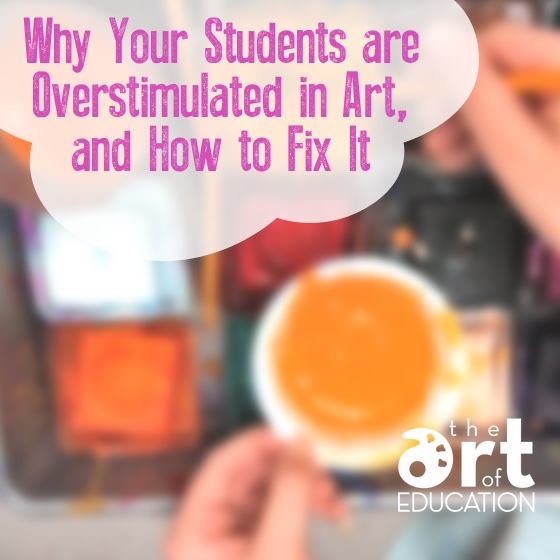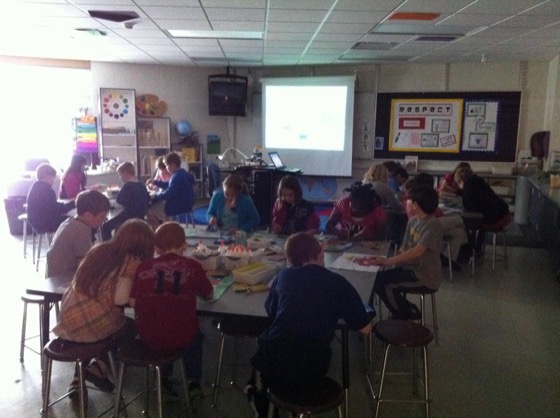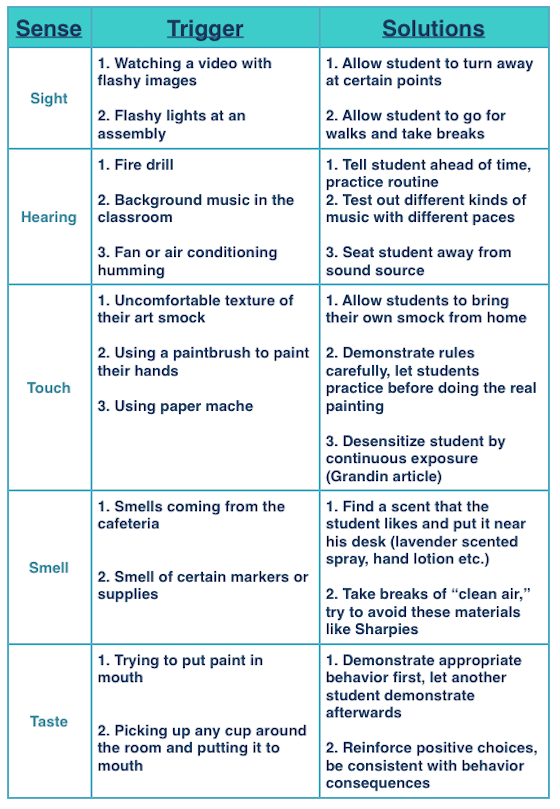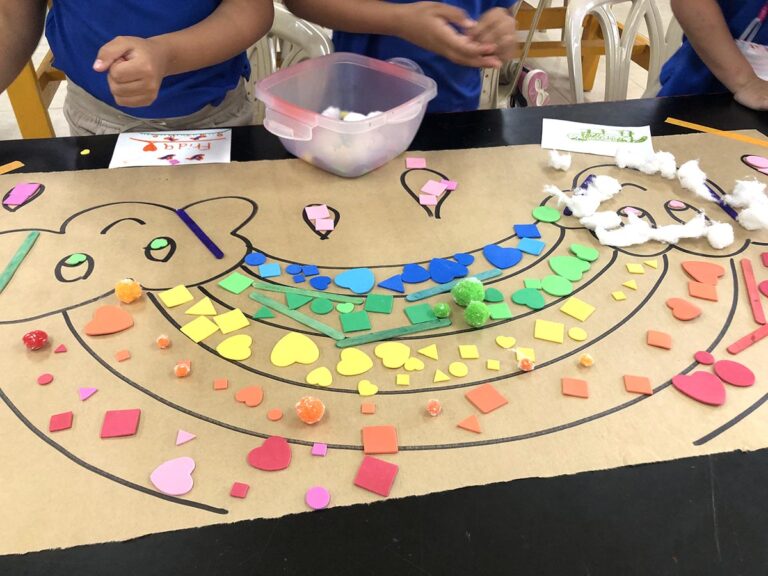I recently read an article about surprising ways our brains work, and it stated, “Despite being one of our five main senses, vision seems to take precedence over the others.”
If some of your students have issues in the art room and you aren’t sure why, perhaps it’s time to think about your environment in relationship to the 5 senses. Too many posters on the wall? Unnecessary supplies set out? Cluttered countertops? Art toys littering your desk? Yes, this sounds all too familiar.
You may notice the second students walk in they begin to comment about anything new you’ve put up on the wall, a supply that is out, or a drawing on the board. They are watching. And clutter or change can be oh-so-distracting.
But it isn’t just about visual stimulation!
Today we will walk through a sensory map of your entire art room, thinking about all 5 senses, to see where you may be causing sensory overload for your students. Being sensitive to sensory overload issues can help students on the Autism spectrum, those with special needs, and really, ALL students. Most days, I am personally overstimulated by this colorful life we live. Now, imagine how your students feel when they come into art once a week!

I enlisted Alicia Peters, expert in reaching all artists, to help me come up with the ultimate sensory map to help you identify where you are overstimulating your students in the art room and what you can do about it.
Because it is apparently the most important, and we are artists, let’s start with vision.
Visual
Posters, bright florescent lights, cluttered countertops and items hanging from the ceiling can all contribute to visual overload. For students who can’t focus, Alicia likes to offer what she calls “Personal Art Studios,” which are simply cardboard desk dividers. Any student can choose to grab an “art studio” at anytime, as long as it doesn’t become an issue.
Olfactory
The art room is full of smells to which we become accustomed.
Alecia shared, “I had a student who exhibited behaviors every time we used glue sticks, which I identified over time. The smell bothered him for some reason. Simply switching glue sticks did the trick.”
If smell is a major issue, you can also adjust the smells of common art room supplies, like paint, by using Koolaid Powder.
Taste
Some students like to put things into their mouths, and we know, it happens in the art room too.
Alicia worked with a paraprofessional who refused to let a student use supplies because “he would just put them into his mouth.” So, she got creative and said, “Let’s start with something in the mouth first.“Gum, or a rubber chewy from the classroom did the trick. Once that sensory need was fulfilled, the student no longer needed to put supplies in his mouth.
Auditory
If you have a student who is on the Autism Spectrum, for example, and the productive noise of the art room is problematic, have an honest conversation about the situation, in confidence, with the rest of your class. Focus on the importance of community and how noise level can really hinder some students. Reiterate that everyone is valued in the community. Students will respond well.

In addition, did you know that wearing lipstick can really help students with hearing impairments? The color creates more contrast for lip reading.
Another tip is to avoid the common mistake of turning your back to the students while you talk or draw on the board. Facing students as much as possible will help them hear and read your lips.
Tactile
One of my personal favorite tips is to always keep a box of cheap, Latex-free gloves in your classroom. If students don’t like the feeling of clay or paint on their hands, why make them miserable? Pull out a set of gloves and make the art experience enjoyable. They can be selectively available to anyone.
As Alecia says, “If it’s good for one student, it’s good for all!”
Here is a really wonderful Sensory Matrix Map that Janine, a student in AOE’s Autism and Art class, recently created. I wanted to share it with you because it does an excellent job of visualizing the concept of thinking about your room in this way. And, hopefully, it will give you lots of creative ideas to start with if you decide to create your own Sensory Matrix Map!

What is your biggest sensory issue in the art room?
What have you done to help solve it?
Magazine articles and podcasts are opinions of professional education contributors and do not necessarily represent the position of the Art of Education University (AOEU) or its academic offerings. Contributors use terms in the way they are most often talked about in the scope of their educational experiences.




